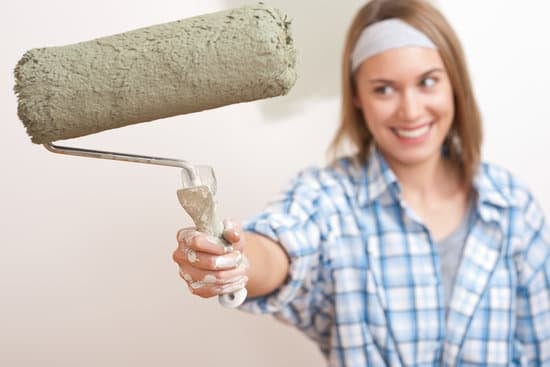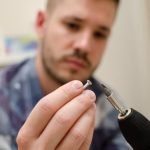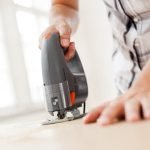Struggling with poor cell service at home? Can you improve cell service in your home? In today’s digital age, having reliable cell service within the confines of your own living space is non-negotiable. Whether it’s for making important calls, sending texts, or accessing the internet, a strong cell signal is essential for staying connected. However, many individuals face the frustration of dropped calls and slow data speeds due to weak cell reception within their homes.
Understanding the significance of reliable cell service in your home is crucial. In this article, we will explore the common issues that arise from poor cell service at home, delve into the factors that contribute to weak cellular signals indoors, and provide practical solutions for improving your cell service. By the end, you’ll have a comprehensive understanding of how to boost your cell signal and stay connected seamlessly within the comfort of your home.
Stay tuned as we address the challenges faced by many individuals when it comes to receiving proper cell service indoors. From identifying common issues to exploring effective DIY solutions and investing in signal boosters, we’ve got you covered with all the information you need to enhance your cell service at home. Let’s dive in and discover how you can improve your cell service starting today.
Common Issues
Dead Zones
One of the most common challenges that people face with cell service at home is dead zones, or areas where there is little to no signal. Dead zones can occur in different parts of a home, such as basements, attics, or even specific rooms. This can be frustrating for individuals who rely on their cell phones for work, communication, and entertainment.
Call Quality
Another common issue with poor cell service at home is the quality of phone calls. When signal strength is weak, it can result in dropped calls, poor call quality, and difficulty in understanding the person on the other end of the line. This can be especially problematic for those who need to make important business calls or conduct interviews from home.
Data Speeds
Weak cell service can also impact data speeds and internet connectivity on mobile devices. Slow data speeds can be frustrating for individuals who need to use their smartphones or tablets for tasks such as streaming videos, downloading files, or browsing the web. Poor data speeds at home can significantly impact productivity and enjoyment when using mobile devices.
Factors Affecting Cell Service
Cell service issues at home can be frustrating, but understanding the reasons behind weak cell signal can help in finding the right solutions. One of the primary factors affecting cell service is the distance from the nearest cell tower. The farther you are from a tower, the weaker your signal will be. Additionally, physical barriers such as thick walls, dense building materials, and even natural obstructions like trees or hills can block or weaken cell signals.
Another significant factor that contributes to poor cell service is network congestion. During peak hours or in densely populated areas, network traffic can overwhelm cellular towers, resulting in dropped calls and slow data speeds. Weather conditions can also affect cell service – heavy rain, snow, or fog may interfere with signal transmission and reception.
In some cases, outdated or malfunctioning equipment within your home could also be a culprit for weak cell signal. This includes older routers or modems that may not be performing at optimal levels, as well as electronic devices causing interference. By identifying these factors affecting cell service at home, you can take steps to improve your situation and enjoy better connectivity.
| Factors Affecting Cell Service | Impact |
|---|---|
| Distance from nearest cell tower | Weakened signal |
| Network congestion | Dropped calls and slow data speeds |
| Interference with signal transmission and reception |
Solutions for Improving Cell Service
Improving cell service in your home is essential for staying connected and ensuring reliable communication. There are various options and techniques available to boost cell signal at home, allowing you to enjoy better coverage and fewer dropped calls.
Wi-Fi Calling
One solution for improving cell service at home is utilizing Wi-Fi calling. Many smartphones and network providers offer the option to make calls over a Wi-Fi connection, bypassing the need for a strong cellular signal. This can be especially helpful if you have a reliable internet connection but struggle with poor cell service.
Cell Signal Boosters
Another effective option for enhancing cell service at home is investing in a cell signal booster. These devices work by capturing existing outdoor signal, amplifying it, and then rebroadcasting the stronger signal within your home. Cell signal boosters come in various types, including those designed for single rooms or entire homes, allowing you to choose the best option based on your specific needs.
External Antennas
For those looking for a more advanced solution, external antennas can be installed to capture stronger outdoor signals and bring them into your home. These antennas are typically mounted on the roof or exterior of the house and connected to an indoor repeater, effectively improving cell service throughout the property.
By opting for one of these solutions or a combination of them, you can significantly improve cell service in your home, ensuring that you stay connected without interruption.
DIY Solutions
If you are experiencing poor cell service in your home, there are several do-it-yourself solutions that you can try to improve the signal quality on your own. One of the simplest and most effective ways to enhance cell service is by using Wi-Fi calling.
Most smartphones now have the capability for Wi-Fi calling, allowing you to make and receive calls over a Wi-Fi network instead of relying solely on cellular networks. This can be especially helpful if you have a weak cell signal but a strong Wi-Fi connection in your home.
Another DIY solution for improving cell service is by using a femtocell device. Also known as a “mini cell tower,” this device is connected to your internet router and works by creating a small area of strong cell coverage within your home.
Many network providers offer femtocell devices as part of their services, so it’s worth checking with your provider if this option is available to you. Alternatively, you can also consider purchasing your own femtocell device from third-party retailers.
In addition to these options, simple changes like repositioning your router or phone, keeping them charged, and updating your device’s software can also help improve cell service at home. By following these step-by-step DIY solutions, you may be able to significantly enhance the quality of your cell service without having to invest in expensive equipment or professional assistance.
| DIY Solutions | Benefits |
|---|---|
| Wi-Fi Calling | Improves call quality without relying solely on cellular networks |
| Femtocell Device | Creates strong cell coverage within your home using internet connection |
| Simple Changes | Repositioning devices, software updates, and keeping devices charged can enhance cell service |
Purchasing Signal Boosters
Investing in a signal booster for your home can be a potential solution to improve cell service. The primary advantage of using a signal booster is the ability to amplify weak signals and improve call quality, data speeds, and overall connectivity within your property. Signal boosters work by capturing existing outdoor cell signal, amplifying it, and then redistributing the boosted signal throughout the indoor area, effectively filling in any coverage gaps.
One of the main pros of investing in a signal booster is that it can serve as a one-time investment that provides long-term benefits. By installing a signal booster, you can enjoy improved cell service without having to rely on ongoing subscription fees or additional costs from your network provider.
Additionally, signal boosters are relatively easy to install and can be used with multiple cellular devices simultaneously, making them a convenient option for households with multiple family members or residents.
However, there are also some cons to consider when investing in a signal booster for your home. One potential drawback is the cost associated with purchasing and installing the device.
While there are various types and models of signal boosters available at different price points, some homeowners may find the initial investment to be prohibitive. Additionally, it’s important to note that not all signal boosters are compatible with every network provider or cellular technology, so it’s crucial to research and ensure that you select a device that aligns with your specific needs and requirements before making a purchase.
Network Providers
If you are experiencing poor cell service at home, one of the best ways to address this issue is by working directly with your network provider. Here are some steps and tips for improving your cell service in collaboration with your network provider:
- Reach out to your network provider: The first step in improving your cell service is to contact your network provider to report the issue. It’s important to provide specific details about the areas in your home where the signal is weak or non-existent.
- Request a site survey: Some network providers offer site surveys to assess the coverage and signal strength in and around your home. This can help them identify any potential obstacles or deficiencies that may be affecting your cell service.
- Ask about network extenders: In some cases, network providers offer network extenders or femtocells that can improve cell service within your home. These devices work by connecting to your existing internet connection and creating a mini cellular tower inside your home.
Working with your network provider can be an effective way to address issues with poor cell service at home. By reporting the problem, requesting a site survey, and exploring options such as network extenders, you may be able to significantly improve the quality of your cell signal within your home environment. Remember that different providers may have different solutions available, so it’s worth reaching out to see what options are available for you.
Conclusion
In conclusion, ensuring reliable cell service in your home is essential for staying connected and productive. The challenges of poor cell service at home are common, but there are various factors that can affect the strength of the signal. From physical barriers to network congestion, understanding these factors is crucial in finding effective solutions to improve cell service.
Fortunately, there are a variety of options and techniques available for boosting cell signal at home. From DIY solutions such as repositioning your router or using Wi-Fi calling, to investing in signal boosters, there are ways to enhance your cell service on your own. It’s important to weigh the pros and cons of purchasing signal boosters and consider working with your network provider to find the best solution for your specific needs.
By taking proactive steps and exploring different options, you can significantly improve the cell service in your home. Whether it’s optimizing your Wi-Fi network or investing in a signal booster, finding the right solution can ensure that you have reliable connectivity for calls, texts, and internet usage. With these key takeaways and tips in mind, you can enhance the overall cell service experience within the comfort of your home.
Frequently Asked Questions
Is There a Way to Get Better Cell Service in My House?
Yes, there are several ways to improve cell service in your house. One option is to use a signal booster, also known as a cell phone repeater or amplifier, which can enhance the signal strength and improve reception.
Another option is to switch to a carrier that provides better coverage in your area. Additionally, you can try using Wi-Fi calling if your phone and carrier support it.
Can I Boost Phone Signal in My House?
Yes, you can boost phone signal in your house by using a signal booster or installing a femtocell device provided by your carrier. A signal booster works by capturing the existing outside signal, amplifying it, and then broadcasting the enhanced signal within the building.
A femtocell creates a small cell site inside the home and connects to the carrier network through an internet connection.
How Can I Improve My Mobile Home Cell Service?
There are various ways to improve mobile home cell service. You can start by determining which areas of your home have the weakest signal and then try using a signal booster or installing a femtocell device in those areas.
Additionally, you may want to consider upgrading to a newer smartphone model that supports advanced cellular technologies for improved reception. It’s also worth considering switching to a carrier with better coverage in your specific location.

I’m thrilled to have you here as a part of the Remodeling Top community. This is where my journey as an architect and remodeling enthusiast intersects with your passion for transforming houses into dream homes.





